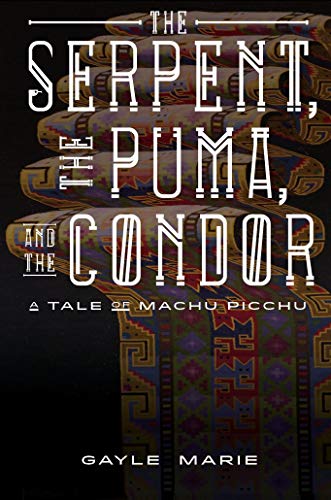The Serpent, The Puma, and The Condor
In scope, Marie’s debut novel describes the fall of the Inca Empire, but in essence, it tells the remarkable life story of Umiña, who is born of a sacred Inca ritual, trained as a priestess in the arts of healing, and burdened with knowledge of a prophecy which says that one day The People will be enslaved by white invaders from across the sea. As advisor, wife, and then widow of the Inka Atahualpa, who is executed by the Spanish in 1532, Umiña is helpless to prevent The Prophecy from coming to pass, but the conventional narrative of conquest is nuanced by Marie’s complex characters. Francisco Pizarro, self-made yet illiterate, seeks fame and wealth but not at moral cost; his golden-haired horsemaster, Rodrigo de Cotero, falls in love with the New World and Umiña; and Father Cigüeña, sent to convert the natives, begs Umiña’s intercession during his own crisis of faith. Along with her childhood friend Rumi, kidnapped by Pizarro and made his translator, Umiña plays her own role in the conquest, including the self-appointed task of protecting from discovery the sacred city of Machu Picchu.
Marie renders Inca beliefs with great sensitivity, including their cosmology, reverence for the Sun, and the uses of ritual sacrifice. The familiar visuals of Inca civilization—the terraced cities and stone temples, soaring mountains threaded with suspension bridges, the achievements in weaving and metallurgy, the staggering amounts of gold—provide backdrop for a tale that feels both specific and timeless. With brisk prose and layered characters, Marie examines the human heart within a narrative that encompasses the rise and fall of civilizations. The result is nothing short of fascinating.










